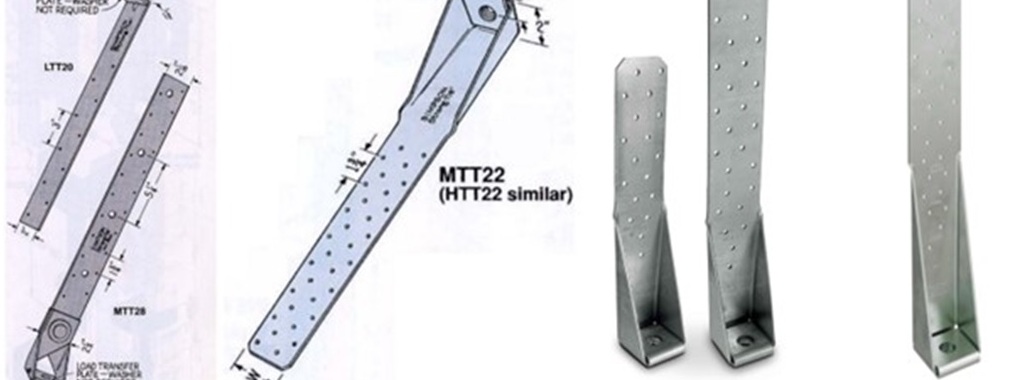The HTTH6.5 heavy tension tie (Figure 1) is designed to meet the growing demands of modern construction. This product combines state-of-the-art design with rigorous testing, offering a robust and reliable solution for high-load applications. Its painstaking engineering and precision manufacturing ensure superior performance even in the most demanding conditions.

As part of Simpson Strong-Tie’s legacy of innovation, the HTTH6.5 is the latest iteration in a long line of nailed tension ties, a tradition that began in 1987 (Figure 2). Continuous improvements in this product line have allowed us to push the boundaries of structural connections.

For a deeper dive into the history and evolution of tension ties, you can explore the Seventh Day of Trivia blog post, which details our development of this product line. In the current post, we discuss what makes the HTTH6.5 our most advanced solution yet and how it came to be.
To achieve the highest load possible for this part, we optimized seat width, meticulously determined through extensive finite element analysis (FEA) and physical testing. This width strikes the perfect balance between reducing deflection and minimizing stress concentration, ensuring the connector performs reliably in every load condition. This precise dimension outperformed other widths in both simulated and real-world scenarios, confirming its efficacy in enhancing structural integrity.
Additionally, the cut washer plays a critical role in evenly distributing the load across the connector, helping to prevent localized stress. It is essential for maximizing the HTTH6.5’s load capacity, especially in meeting deflection requirements (Figure 3).

A common challenge in timber construction is the risk of wood splitting under load, which can undermine structural integrity. The HTTH6.5 addresses this issue through an optimized nail pattern developed after systematic testing. By analyzing various nail placements, the pattern was refined to minimize the risk of wood splitting, ensuring that the connector maintains its load-bearing capacity and the durability of the timber (Figure 4). Table 1 presents the allowable tension load capacities of the HTTH6.5 tension tie for both nails and Strong-Drive® SD Connector screws. Additionally, Figure 5 depicts a typical HTTH6.5 installation, illustrating its application in a real-world setting.



For detailed specifications and to explore more about this connector and our HTT line, visit the HTT product page. The Post-To-Foundation Designer and Site-Built Shearwall Designer web apps will also be updated with the HTTH6.5 as a holdown solution.
The HTTH6.5 heavy tension tie is more than just a product; it is a solution designed specifically for the demands of evolving construction conditions. By integrating advanced design and precision manufacturing, the HTTH6.5 stands out as a leader in its field. Whether you’re dealing with heavy loads or the challenges of timber construction, the HTTH6.5 is engineered to deliver superior performance and peace of mind.




